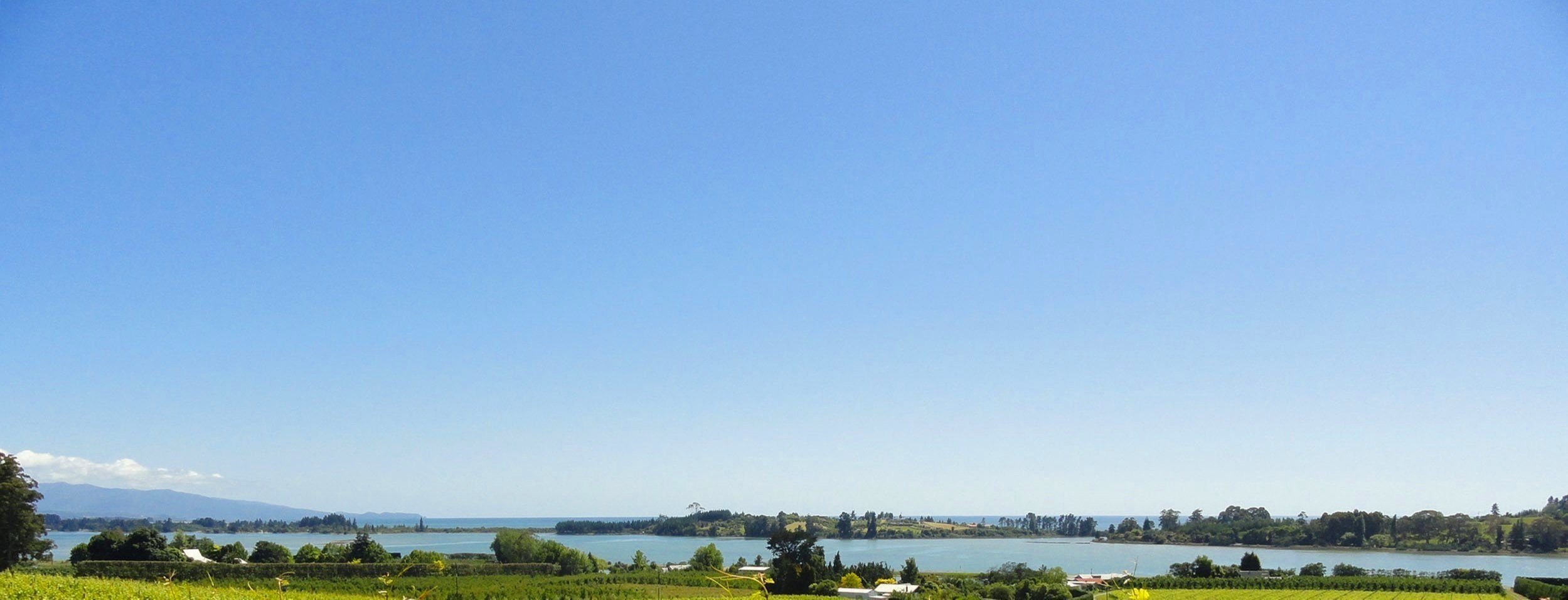
Our Place
Home block
All Sea Level Wines are produced sustainably in small batches at our single vineyard ‘Home Block’. The vineyard is eight-hectares of free-draining soil with a gentle hill-side aspect, sloping down to the Waimea estuary, situated along the Coastal Highway between Tasman and Motueka in the Nelson region. Its gentle slopes increase sun exposure and the crucial sea breeze dries as it moves through the canopy, producing aromatic wines with varietal intensity and uniquely coastal flavours.

Sustainability
future
We are proudly certified by Sustainable Winegrowing New Zealand (SWNZ). Established in 1997 to elevate industry performance on an environmental, social, and economic level by setting sustainability standards for wineries and vineyards. These standards also ensure the best quality from our vineyard to the bottle with minimal environmental or social impact.

Harvest Notes
site attributes
Our “Home Block” single vineyard is closely planted with Pinot Gris, Chenin Blanc and Chardonnay. The free-draining soil composition of heavy 'Moutere' clay, threaded with gravels largely negates the need for irrigation, ideal for growing aromatic wines. The hillside aspect increases sun exposure while the sea breeze allows movement up through the canopy, drying it out, minimising the risk of disease and bunch rot.
-
Fine weather over the early and middle parts of the season results in good yield and healthy growth. Some rain over February, resulted in disease pressure and the need for careful canopy management to deliver clean fruit at harvest.
-
The season began with early budburst followed by cooler weather over flowering. This resulted in lower yields.
The weather became warm and dry over the ripening season, contributing to pristine fruit and ripe aromatic flavours.
-
Cooler weather early in the season and over flowering resulted in lower yields. Regular rain events through the Christmas period resulted in healthy plant growth and no need for irrigation.
The weather became hot and dry late in the season contributing, to ripe fruit flavours and meant little disease pressure from Botrytis.
-
The season started with a mild and wet spring, resulting in good soil moisture. Cooler conditions over the flowering period in early December lead to variable fruit set.
The New Year was greeted by hot and settled weather, allowing for ideal ripening, good berry size and flavour development. Some rain in early March replenished the groundwater and spurred on the vines to fully ripen the fruit and deliver good yields.
-
Budburst was slightly earlier than normal and the weather slightly warmer than average. The early part of the season was notable for no frost events. In November, the weather became dry and the timing of the season returned to the long term average, with some cooler days.
Hot, dry weather in early December, resulted in a very good fruit set, and a rapid advancement in vine growth. The remainder of December and January were very hot. February was wetter, with two ex-tropical cyclones adding some disease pressure.
However, in March and April, the region was exposed to perfect late season ripening conditions of warm, sunny days and cool nights, resulting in intense fruit flavours.
-
The season started with an early bud-burst due to a warm winter. A warm, dry spring and early summer resulted in ideal growing conditions and healthy yields. Mid-season rain spells also aided plant growth and canopy vigour. Some cooler weather over January was followed by a warm, dry ripening period.
The grapes were hand-harvested in cool early morning conditions. The fruit was de-stemmed and crushed, then held on skins for 3-4 hours to extract colour and flavour from the skins. The juice was then gently pressed out, clear settled and fermented at cool temperatures. The ferments were carried out in stainless steel.

